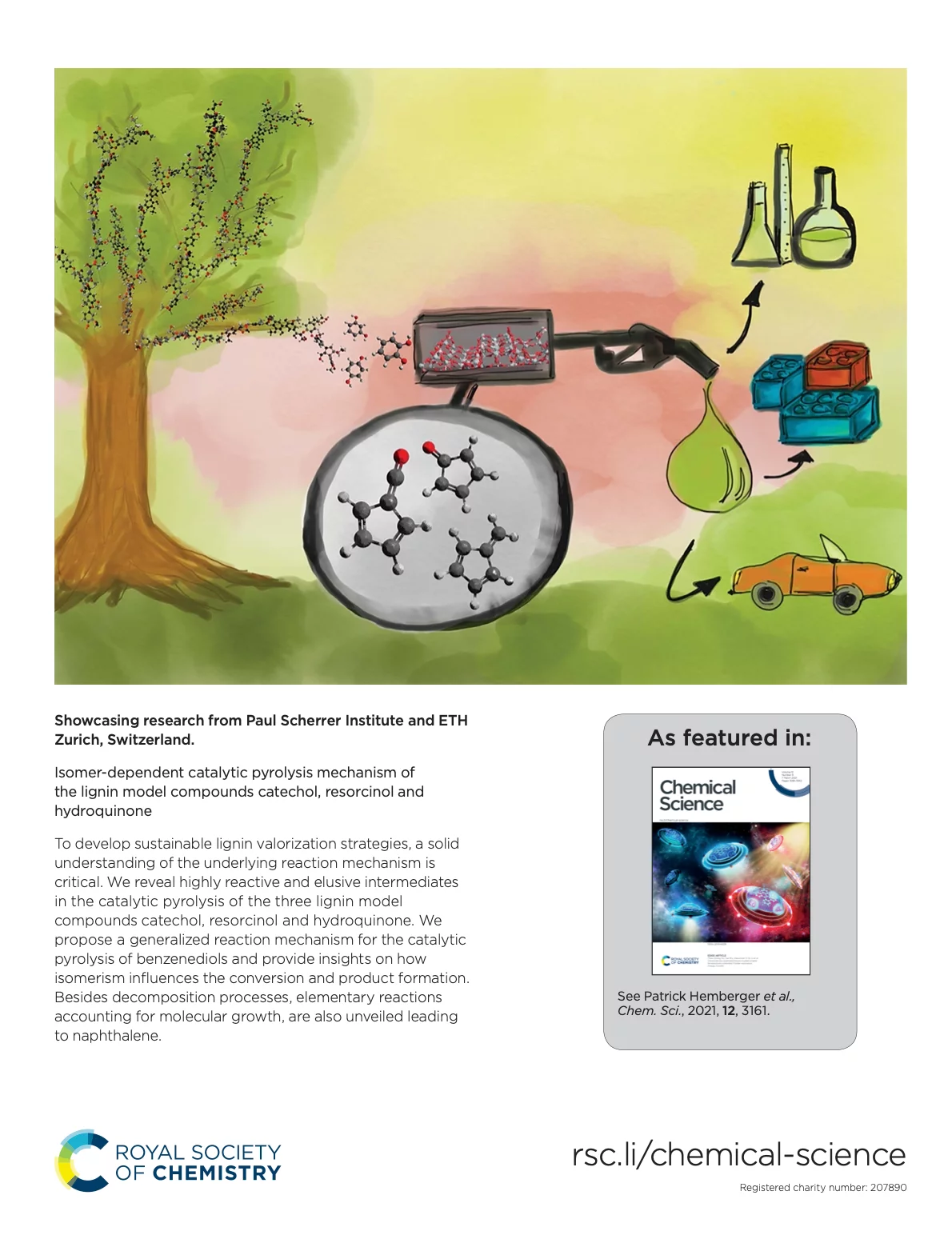Lignin is one of the major constituents of biomass consisting of aromatic moieties and phenolics. Valorization via efficient depolymerization strategies to fuels and chemicals would strongly support the transition period from a fossil-fuel-based to a sustainable and CO2 neutral society. However, before these processes can be efficiently utilized a full mechanistic understanding is required, especially if conventional trial-and-error approaches fail.
Scientist from PSI and ETH Zurich could shed light on one of the most basic elementary reactions in lignin catalytic fast pyrolysis. The three dihydroxy-benzene isomers, are common model compounds for lignin and were catalytically pyrolyzed over a zeolite (H-ZSM-5) while the products and highly reactive intermediates were in-situ and operando detected using advance mass spectrometric and photoelectron spectroscopic tools available at the VUV (x04db) beamline of the Swiss Light Source.
Based on the substitution pattern, i.e. the relative position of the OH groups on the benzene ring, the reactivity and the product distribution changes. While 1,4-hydroxybenzene (hydroquinone) and 1,3-hydroxybenzene (resorcinol) possess the lowest reactivity the 1,2-isomer (catechol) catalytic decomposition is accelerated due to the adjacent hydroxy groups. This close proximity of the OH groups triggers a dehydration reaction (water loss) to yield fulvenone, a highly reactive species, which is a short-cut responsible to the formation of phenol, cyclopentadiene and benzene.
Besides this marked difference in the reactivity of the three isomers, the researchers were able to identify new reaction pathways to yield polycyclic aromatic hydrocarbons (PAH), such as naphthalene, which are coke precursors and responsible for the deactivation of the catalyst. These mechanistic insights may be generalized to predict the fate of larger lignin moieties to take control of the selectivity of this process in a much more targeted way.
Contact
Dr. Patrick Hemberger
Reaction Dynamics Group
Paul Scherrer Institut
Telephone: +41 56 310 3236
E-mail: patrick.hemberger@psi.ch
https://www.psi.ch/lsf/patrick-hemberger
Original Publication
Isomer-dependent catalytic pyrolysis mechanism of the lignin model compounds catechol, resorcinol and hydroquinone
Zeyou Pan, Allen Puente-Urbina, Andras Bodi, Jeroen A. Bokhoven and Patrick Hemberger
Chem. Sci., 2021,12, 3161–3169
DOI: 10.1039/d1sc00654a

